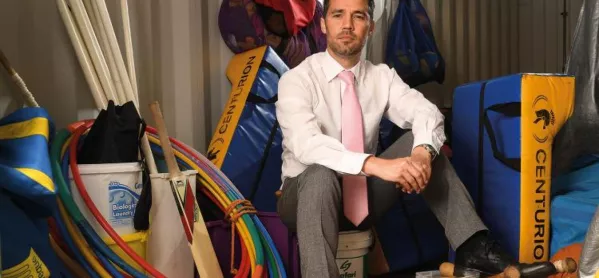- Home
- ‘We urgently need 1000s of new primary places - the only solution is more free schools’
‘We urgently need 1000s of new primary places - the only solution is more free schools’

Yesterday was national primary offer day and while the majority of families were offered a place at the primary school of their choice, too many found out that this wasn’t the case.
In areas where there are lots of great schools, this won’t cause any great problem, but if good options are limited, missing out can have devastating effects.
This is a situation that has the potential to get much worse. The government’s most recent school capacity data shows that primary need is on the rise, with nearly 80,000 new primary places needed by 2021. These places are increasingly more likely to be based outside of London, with Manchester and Birmingham expecting high growth in their pupil populations.
Growing existing schools is obviously really important in addressing this - but this has already happened in a huge way, and there are only so many places that can be created without putting them under unsustainable stress. Bigger schools are not always better schools.
We also need to think about whether the schools with space to grow are the ones in the best position to do so. From 2014-15 to 2015-16 - the most recent year for which we have data - more than 7,500 new places were created in primary schools judged as “requires improvement” or “inadequate” by Ofsted. Putting more kids into schools already finding things tough raises questions about the quality of education they’ll receive, and potentially makes it harder for the school to turn things around.
With the above in mind, this is why I think that new free schools offer a far more effective solution. As well as being a cheaper way of providing new schools, they are more likely to be rated “outstanding” by Ofsted than other types, get better results in the primary and secondary phase and are more likely to be oversubscribed. This is despite there being three times as many free schools in England’s most deprived areas than the least deprived.
We know where the challenge lies. Although we’re still waiting on the fine details for the next wave of free schools, it’s likely that these be will targeted towards areas of educational need, as well as opportunity areas and educational cold spots across the country. These are located across the country, but most importantly, outside of London and the South East. These areas have not been impacted by educational reforms to the same extent - and they have suffered.
For example, the North East was the poorest performing region at secondary last year in terms of Progress 8, and the only region where no local authority recorded a positive score. The North West was the second poorest performing, averaging -0.14 at this measure. Meanwhile, Key Stage 2 results in Yorkshire and the Humber were the lowest in the country.
We already know the impact that free schools make in social mobility cold spots. Dixons Trinity Academy in Bradford and Tauheedul Islam Boys’ High School in Blackburn produced some of the best GCSE results in the country last year. Elsewhere, Elliott Hudson College in Leeds has been rated “outstanding” by Ofsted, as has the Boulevard Academy in Hull. These schools are beacons of excellence in communities that have spent too long mired in educational underperformance.
What’s more, we’ve already seen the evidence that the free school programme is starting to regain its momentum. The recent wave of special free school approvals saw 14 new schools given the go-ahead to open across the country; these schools will provide more than 1,100 places for SEND students.
This came off the back of the announcement of a new application process for university-sponsored specialist maths schools. We’ve already seen how successful these schools can be, with King’s College London Mathematics School at the top of the A-level results league table, and Exeter Mathematics School offering an outstanding quality of education in the South West.
The last Budget set aside funding for another 110 new free schools, which will create more than 50,000 new school places. It’s vital that this funding is protected if other parts of the country are going to benefit from the free school programme. Last year’s Unlocking Talent, Fulfilling Potential social mobility plan outlined that the free school programme will target areas of educational underperformance, with a particular focus on enabling more challenging areas to feel the full benefit of this programme.
In summary, then, if we’re going to ensure that as many kids as possible get into schools that will succeed by them, we need more free schools set up across the country. We know that in September, too many children will be starting at schools that they didn’t choose or aren’t right for them - we must do all we can to make sure things get better in the future.
Mark Lehain is the founder and former headteacher of Bedford Free School. He is now director of Parents and Teachers for Excellence and interim director of the New Schools Network
Want to keep up with the latest education news and opinion? Follow Tes on Twitter and like Tes on Facebook
Keep reading for just £1 per month
You've reached your limit of free articles this month. Subscribe for £1 per month for three months and get:
- Unlimited access to all Tes magazine content
- Exclusive subscriber-only stories
- Award-winning email newsletters


